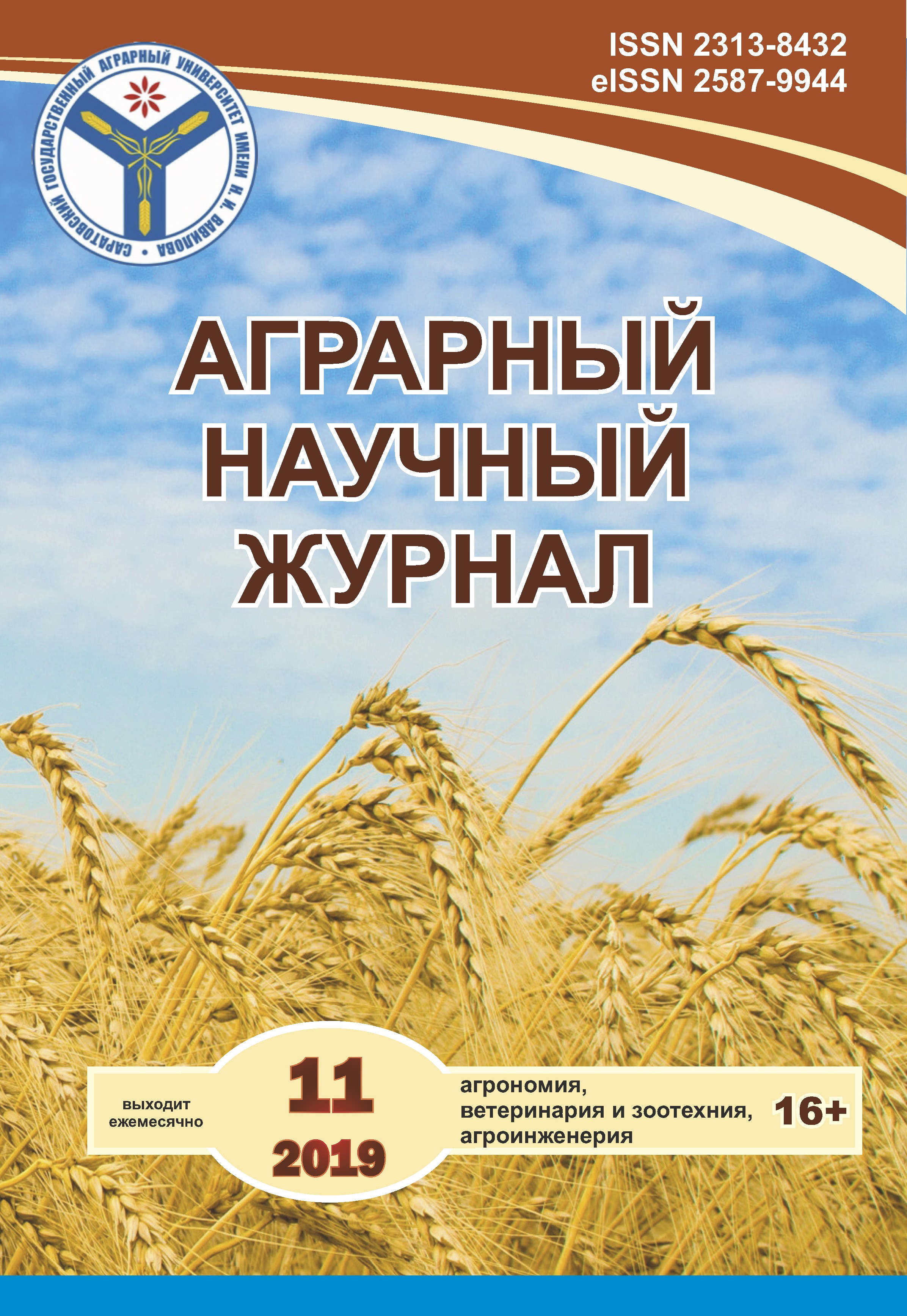Progressive method of basic treatment of soil under barley in the conditions of the semi-desert zone of the Northern Pre-Caspian
DOI:
https://doi.org/10.28983/asj.y2019i11pp40-45Keywords:
type of primary tillage, spring barley, phytosanitary condition of grain crops, total water consumption, productivityAbstract
The results of experimental studies on the use of the resource-saving organ of the soil cultivating aggregate ROPA as a type of main autumn tillage for sowing spring barley are presented. Deep loosening by 0.40–0.45 m improves the agrophysical properties of the soil, contributes to better assimilation of atmospheric precipitation in the autumn-winter period, thereby improving the moisture supply of the root layer by 25% and increasing the fertility of the arable horizon. Using the proposed cultivation allows obtaining up to 1.77-1.79 t/ha of spring barley grain in semi-desert conditions of the Northern Pre-Caspian on old arable lands.
Downloads
Download data is not yet available.
References
1. Беленков А.И., Сабо Умар., Кунафин Р.И. Основная обработка почвы: сравнительная оценка в современных системах земледелия // Нивы России. – 2016. – № 11 (144). – С. 68–69.
2. Влияние приемов основной обработки почвы и удобрений на агрохимические свойства черноземов / Т.А. Трофимова [и др.] // Аграрный научный журнал. – 2019. – № 4. – С. 38–44.
3. Доспехов Б.А. Методика полевого опыта с основами статистической обработки результатов исследований. 5 изд., перераб. и доп. – М.: Агропромиздат, 1985. – 351 с.
4. Инновационные способы обработки почв при возделывании ячменя / Ю.Н. Плескачёв [и др.] // Плодородие. – 2012. – № 6. – С. 18.
5. Казаков, Г.И., Авраменко Р.В., Марковский А.А. Земледелие в Среднем Поволжье. – М.: Колос, 2008. – 308 с.
6. Кирюшин В.И. Проблема минимизации обработки почвы: перспективы развития и задачи исследований // Земледелие. – 2013. – № 7. – С. 3–6.
7. Мухортов В.И., Федорова В.А., Шагаипов М.М. Продуктивность комплексных почв северо-запада Прикаспийской низменности // Вестник РУДН. – 2003. – № 8. – С. 52–58.
8. Технология минимизации основной обработки почвы / И.Б. Борисенко [и др.] // Вестник РУДН. – 2018. – № 1. – С. 35–42.
9. Чурзин В.Н., Асирифи Амрако О. Водопотребление и его составляющие в посевах ярового ячменя в зависимости от предшественников и способов основной обработки почвы // Известия Нижневолжского агроуниверситетского комплекса. – 2013. – № 1 (29). – С. 61–64.
2. Влияние приемов основной обработки почвы и удобрений на агрохимические свойства черноземов / Т.А. Трофимова [и др.] // Аграрный научный журнал. – 2019. – № 4. – С. 38–44.
3. Доспехов Б.А. Методика полевого опыта с основами статистической обработки результатов исследований. 5 изд., перераб. и доп. – М.: Агропромиздат, 1985. – 351 с.
4. Инновационные способы обработки почв при возделывании ячменя / Ю.Н. Плескачёв [и др.] // Плодородие. – 2012. – № 6. – С. 18.
5. Казаков, Г.И., Авраменко Р.В., Марковский А.А. Земледелие в Среднем Поволжье. – М.: Колос, 2008. – 308 с.
6. Кирюшин В.И. Проблема минимизации обработки почвы: перспективы развития и задачи исследований // Земледелие. – 2013. – № 7. – С. 3–6.
7. Мухортов В.И., Федорова В.А., Шагаипов М.М. Продуктивность комплексных почв северо-запада Прикаспийской низменности // Вестник РУДН. – 2003. – № 8. – С. 52–58.
8. Технология минимизации основной обработки почвы / И.Б. Борисенко [и др.] // Вестник РУДН. – 2018. – № 1. – С. 35–42.
9. Чурзин В.Н., Асирифи Амрако О. Водопотребление и его составляющие в посевах ярового ячменя в зависимости от предшественников и способов основной обработки почвы // Известия Нижневолжского агроуниверситетского комплекса. – 2013. – № 1 (29). – С. 61–64.








